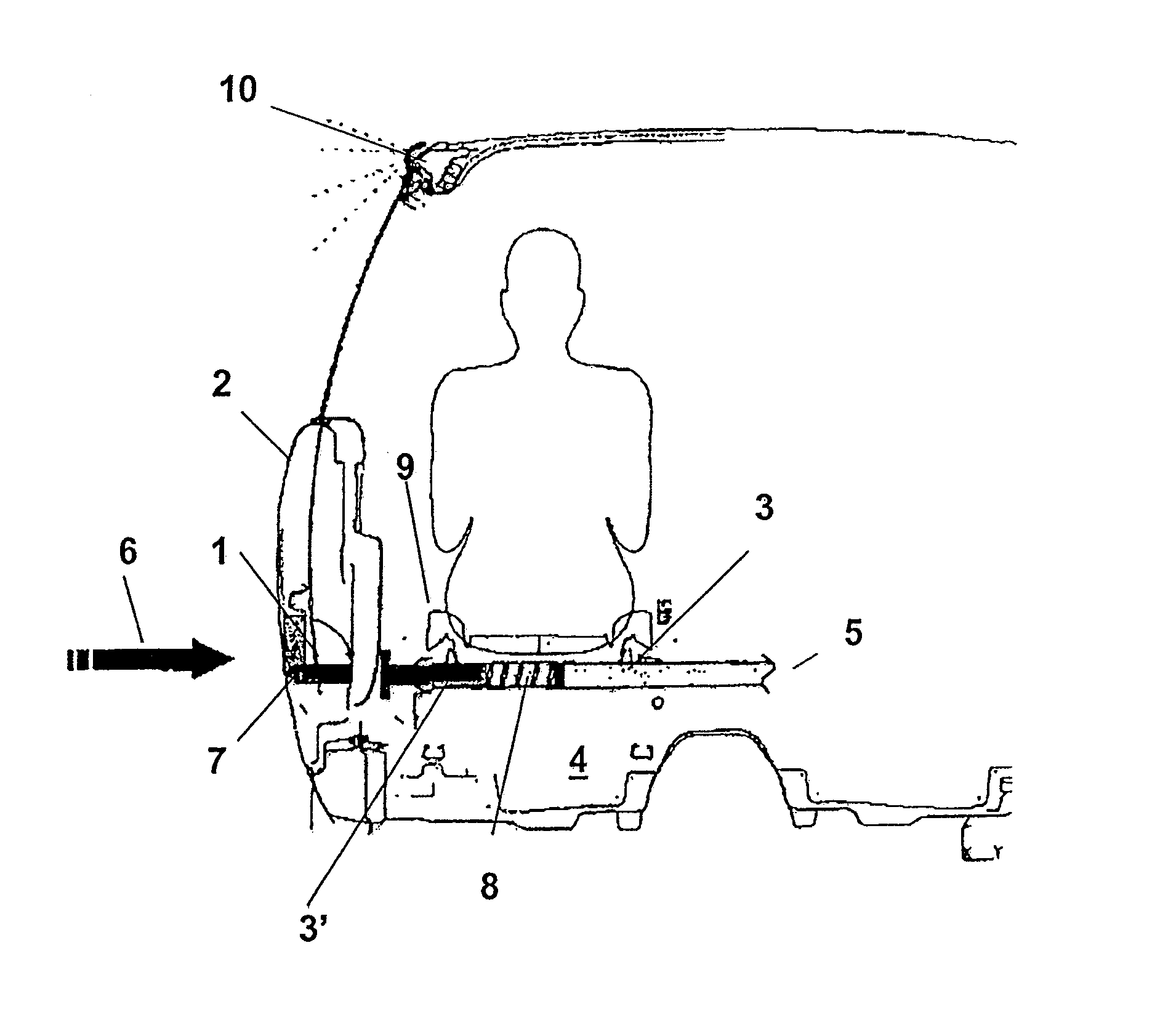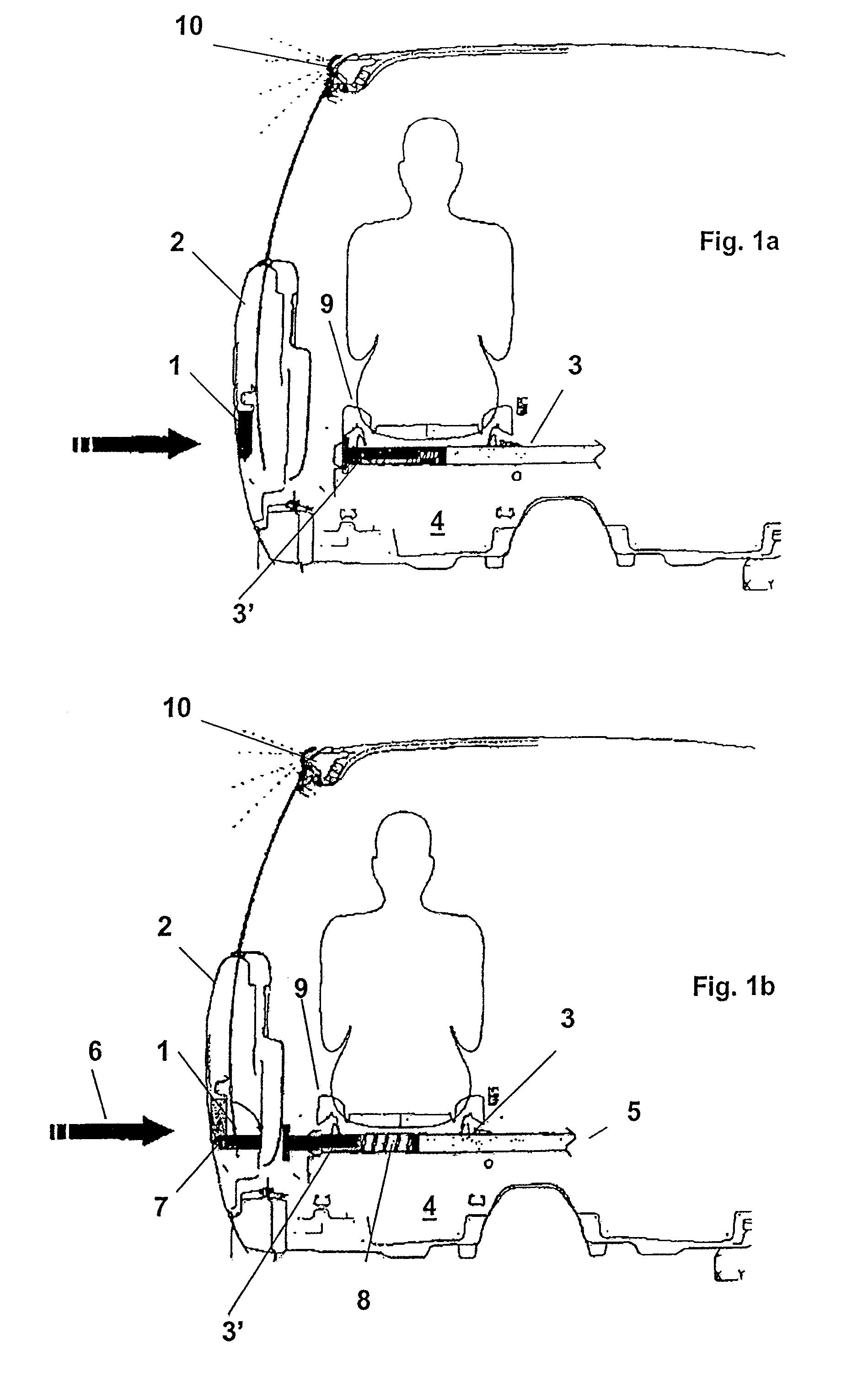Device for a motor vehicle for protecting vehicle occupants when there is an impact of energy directed at a motor vehicle door due to a collision
a technology for protecting vehicle occupants and motor vehicles, which is applied in the direction of vehicle bodies, doors, and monocoque constructions, etc., can solve the problems of increasing the risk of collision, not always adequate, and drastically confined survival space of occupants, so as to improve the safety system, improve the protection of occupants, and optimize the effect of occupant protection
- Summary
- Abstract
- Description
- Claims
- Application Information
AI Technical Summary
Benefits of technology
Problems solved by technology
Method used
Image
Examples
Embodiment Construction
[0024]The first part is preferentially formed of a tube with a rectangular cross section and within the motor vehicle door 2 is connected via a pivot bearing 7 capable of rotating about a horizontal axis. The second part 3 is embodied as tubular actuator with bolt 3′ located inside. The bolt 3′ is preloaded with a spring aid but is initially retained in the tube by means of a retaining aid 9 of SMA wire. The tube in the door in contrast is preloaded through a rotary spring and is likewise retained by an SMA retaining aid in normal driving situations. In the event of a foreseeable crash, both retaining aids are triggered based on a detection signal of pre-crash sensors 10, that is, the bolt 3′ emerges from the tube on the motor vehicle seat 4 and bridges the gap between seat 4 and door inner covering so that the face end of the bolt 3′ comes to rest against the door inner covering. At the same time, the rectangular tube 1 rotates in the door box and thus closes the space in the door ...
PUM
 Login to View More
Login to View More Abstract
Description
Claims
Application Information
 Login to View More
Login to View More - R&D
- Intellectual Property
- Life Sciences
- Materials
- Tech Scout
- Unparalleled Data Quality
- Higher Quality Content
- 60% Fewer Hallucinations
Browse by: Latest US Patents, China's latest patents, Technical Efficacy Thesaurus, Application Domain, Technology Topic, Popular Technical Reports.
© 2025 PatSnap. All rights reserved.Legal|Privacy policy|Modern Slavery Act Transparency Statement|Sitemap|About US| Contact US: help@patsnap.com


